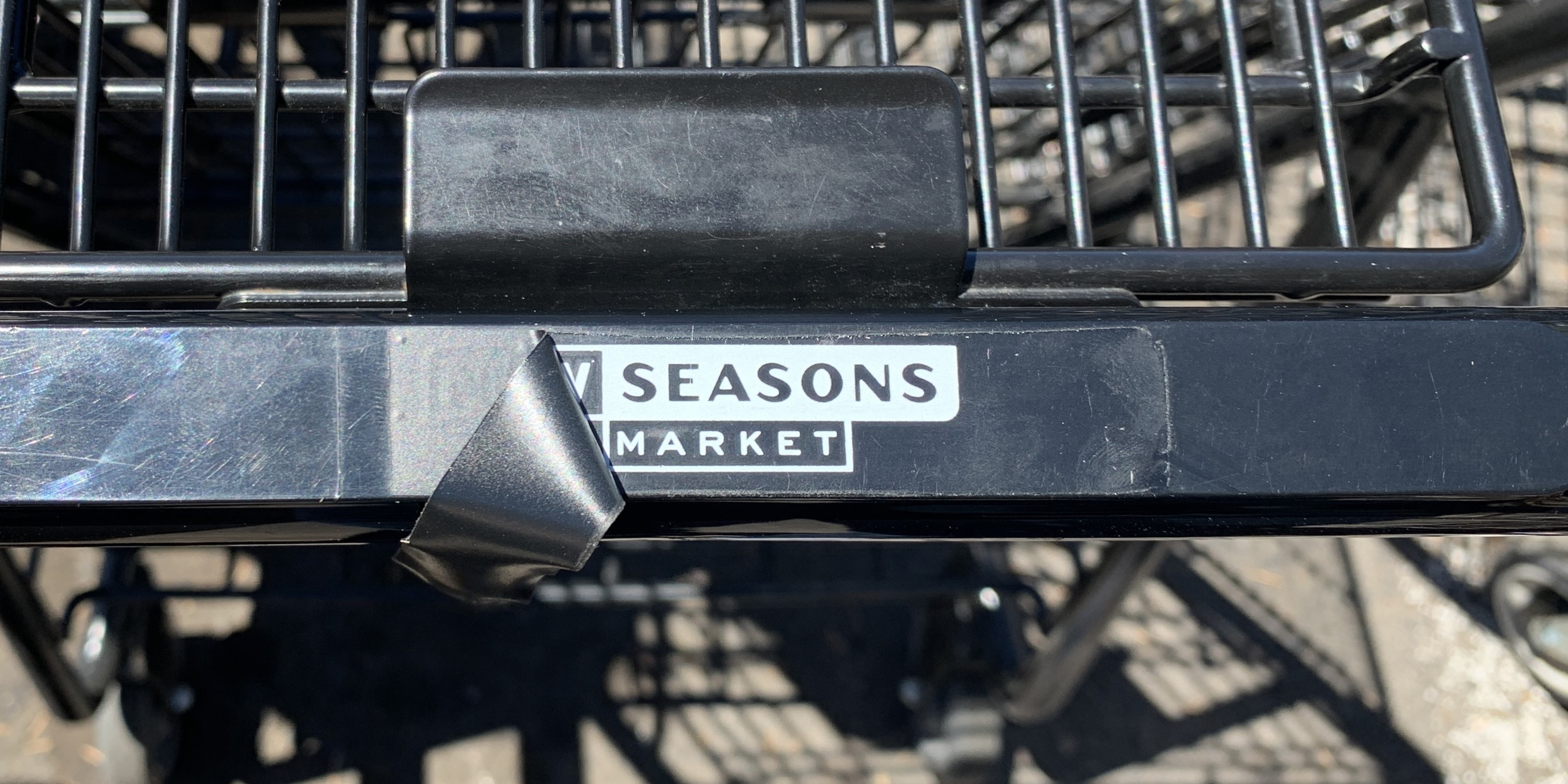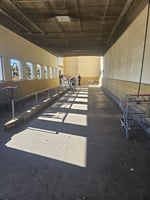Would you take a sledgehammer to loose shopping carts? In 2013, that’s exactly what one state...
How Locking Wheels Get Defeated
Locking wheel systems have been in existence for 25 years. Despite the widespread use of these systems, cart loss problems remain a constant issue for retailers. FMI reported in 2006 that 2 million carts were stolen in the US annually...While no follow up study has been conducted, most retailers believe the number of stolen carts to be much higher than this today.
So why is the problem getting worse? Locking wheel systems primarily rely on very short range radio transmissions from a communication line buried in a store parking lot. Because of this design, there are some simple methods to defeat these systems and still easily steal carts from stores. Below are common ways locking wheel systems get defeated.

- Find a Gap in the Line: The cart in the above picture was several blocks away from its home store. Neither locking wheel had engaged. When checking the locking line in the main parking lot, the wheels locked there…so what happened? Many stores only run a line in the main parking lot area where the main entrance is. This cart likely escaped through the back of the store. DSD deliveries and store employees commonly shuttle carts back and from this area and they can easily be left there. Once they are left here, its very easy for anyone to grab them and push them on their way without having to bother with a locking wheel line.
- Pick up the Cart: Locking wheels rely on short range radio frequencies. If a wheel isn’t in range, it won’t lock. This means you can pick up a cart temporarily and set it down or throw inside a truck and the buried line and the locking wheels are rendered totally inept.
- Just keep Pushing: Any committed cart thief can simply keep pushing the locking wheel until it develops a flat spot. The wheels themselves have very little tread so it doesn’t take long for this to happen. Once they flat spot, the carts push surprisingly well. If you do manage to get the cart back, you also have to replace the now flat spotted wheel.
- Wheel in the Wrong Spot: Many carts with locking wheels also have an anti-tip bracket installed. The bracket is meant to be installed on the opposite side of the locking wheel so its difficult to push or tip the cart. Many times when wheels are replaced…they are not installed in the proper spot – as you can see in this picture, the anti-tip bracket is installed over the locking wheel. This isn’t going to stop anyone from picking up or continuing to push a locked cart.
- Down Transponder: Line repairs and transponder repairs are common occurrences for locking wheel systems. Any time a power outage or maintenance issue occurs, your entire locking wheel perimeter is potentially unworkable.
- Take the Wheel Off: Some cart thieves actually carry a properly sized wrench to unbolt locking wheels from their stolen cart and swap them out with traditional wheels on the spot. The locking wheel will then often get sold.
If you are tired of dealing with constant cart loss and your locking wheel system isn't helping, there are other options: Tracking your carts with QuickTrack from Store Technology Group can help your stores permanently address cart loss problems. By identifying where carts go, you can easily retrieve them or report common offenders to authorities with a unique cart route history feature.



